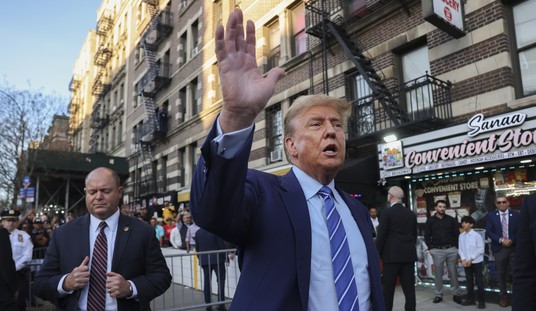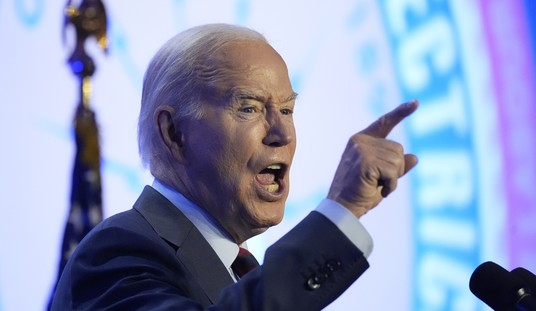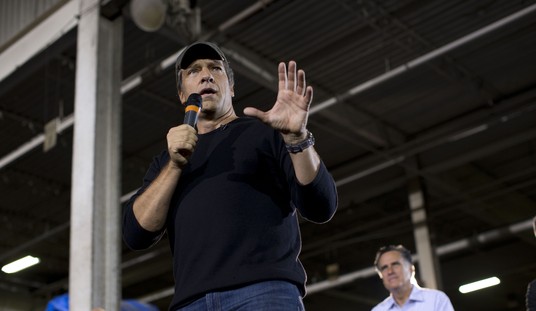Garrett Epps, writing yesterday in The Atlantic, unleashed a nakedly partisan and brazenly inaccurate attack on the Supreme Court that is transparently designed to sway the way the Justices decide the Halbig case. The headline of Epps’ piece blaringly decries “The Extreme Partisanship of John Roberts’ Supreme Court”:
“Politics are closely divided,” John Roberts told scholar Jeffrey Rosen after his first term as chief justice. “The same with the Congress. There ought to be some sense of some stability, if the government is not going to polarize completely. It’s a high priority to keep any kind of partisan divide out of the judiciary as well.”
No one who observes the chief justice would doubt he was sincere in his wish for greater unanimity, greater judicial modesty, a widely respected Supreme Court quietly calling “balls and strikes.” But human beings are capable of wishing for mutually incompatible things—commitment and freedom, for example, or safety and excitement. In his desire for harmony, acclaim, and legitimate hegemony, the chief was fighting himself. As he enters his 10th term, his quest for a non-partisan Court seems in retrospect like the impossible dream.
Literally the only support Epps can muster for this allegation is that the Court ended its term with two 5-4 decisions that were decided along “partisan lines” – at least insofar as the partisan lines in question are determined by the party affiliation of the Presidents who nominated them. The rest of his article is a confusing mish mash of half truths, contradictions, and non-sequiturs, such as the fact that the 2013 term “began with oral arguments in a divisive, highly political case about campaign finance,” (how does this make the Court itself more partisan for hearing these arguments?) and the following, which if you pay attention closely, actually is evidence that the court is not partisan:
In 2012, the Court had let stand the “individual mandate,” but only as a tax, not (as most scholars had expected) as a regulation of commerce. At the same time, it had allowed the expansion of Medicaid but had empowered individual states to close their borders to federal health policy.
Besides the non sequiturs and other logical problems, the main weakness Epps’ piece suffers from is that it’s contradicted by readily available facts. As even the New York Times noted last year:
WASHINGTON — There has been a remarkable outbreak of harmony at the Supreme Court. Of the seven decisions issued in the last two weeks, six were unanimous.
There have been no dissents in more than 60 percent of the 46 cases decided so far this term. At this point last year, the justices were unanimous just 48 percent of the time, according to statistics compiled by Scotusblog. In the two terms before that, 52 percent of the cases decided by now were unanimous.
* * *
The recent unanimous cases are noteworthy for a second reason: many truly speak with a single voice. The court led by Chief Justice John G. Roberts Jr. has set records for faux unanimity, where the justices agree on the result but barnacle the majority opinion with concurrences expressing caveats, interpretive glosses or wholly different rationales.
The recent unanimous cases are different. In five of the six, there was just one opinion.
Such authentically unanimous decisions are built to last. By contrast, when the justices agree on the result but disagree about the reasons for it, the majority opinion has less force.
This year, the Roberts Court continued to make remarkable strides towards unanimity and furthermore split along “partisan” lines less frequently than any Court in recent history:
From affirmative action, campaign spending, public prayers, and labor union power– the justices continue to stack their docket with cases spanning a range of constitutional and legal questions.
What was surprising was how often they agreed to agree. Two-thirds of the 72 cases fully decided this term were unanimous, the highest percentage in years.
* * *
Also amazing was that only 14 percent of the court’s decisions were 5-4, with just four of those 10 splits along the liberal-conservative marker.
There are a lot of things that both conservatives and liberals can either like or dislike about the way that the Supreme Court under Roberts conducts business. But only a fool would suggest that Roberts has been a failure at unifying the Court especially as compared with his predecessors.
The real reason for this article, of course, is the protection of Obamacare. It is clear throughout Epps’ meandering piece that Obamacare holds a special place of privilege for him in terms of laws the Supreme Court Must Not Touch:
Hobby Lobby may have been about religious belief, but it was also very much about politics, about the bitterest divide between the parties.Hobby Lobby was a challenge to the Affordable Care Act. The ACA is Barack Obama’s signature achievement. It also represents the fondest wish of the Democratic Party. Democratic presidents since Harry Truman have sought to extend medical coverage to the nation as a whole. Republicans had bitterly fought this—even in the limited form of Medicare—as “socialism.”
In applying the Religious Freedom Restoration Act broadly to the ACA, theHobby Lobby majority did just what it had done two years before in National Federation of Independent Business v. Sebelius. Without striking the ACA down, it weakened it, hollowed it out, and suggested that in some way it was less legitimate, less worthy of respect, than other laws. In 2012, the Court had let stand the “individual mandate,” but only as a tax, not (as most scholars had expected) as a regulation of commerce. At the same time, it had allowed the expansion of Medicaid but had empowered individual states to close their borders to federal health policy.
Now, it has empowered individual employers to thwart national health policy and deprive their female employees of health benefits the law said they had earned.
It is no secret that received wisdom states that Roberts cast the vote that saved the individual mandate (and thus invalidated Epps’ thesis) because he perceived that to do otherwise would cast the court in a negative and partisan light. Whether that is correct or not, liberals are betting the farm that it is true as it seems to be their only path to success against the current Halbig challenge to Obamacare. As I noted back when the D.C. Circuit decided Halbig, before the certiorari petition had even been filed with the Supreme Court, liberals like Josh Marshall were already publicly throwing slime on the Supreme Court as a way to hopefully influence their decision:
Against this background, Marshall decided yesterday to loose an unhinged screed aimed directly at the legitimacy of the Supreme Court based on a case they have not even ruled on yet. Forget having ruled on it – no one has even petitioned the Supreme Court to grant cert on the case. And yet despite all these facts, Marshall feels fully qualified to sally forth and pronounce with confidence the future course of the Halbig decision, from which he has already concluded – I kid you not – that the Supreme Court is “corrupt.” (In his defense, he completely redefined the word “corrupt” so that he could still call the Supreme Court “corrupt” according to his own definition without the embarrassment of resorting to facts.)
* * *
From a polemic standpoint, however, Marshall’s attack is even more troublesome. On what basis should the Supreme Court be called “corrupt” even if they did rule that where a statute says “State” it means “State” and where it says “Federal” it means “Federal”? Argue all you want about the overall intent and structure of the statute, to say nothing of the overarching difficulty of unwinding the subsidy issue at this point if the IRS Rule is struck down, but the D.C. Circuit’s current ruling simply cannot be called unreasonable or facially absurd even if you disagree with the result (at least not by anyone whose partisan interests have trumped their better judgment). And it certainly cannot be said that anyone who agrees with it must necessarily be on the take or ruling from improper or corrupt motives. Marshall’s attack is so baseless and without any factual merit that if he were a member of the Bar, he would be subject to legitimate disciplinary action for violations of Rule of Professional Conduct 8.2.
Moreover, the suggestion that the imaginary course of action taken by the Roberts Court in Marshall’s fevered imagination, would somehow be worse or more “corrupt” than the the decades-long romp of the Warren Court, which fundamentally rewrote wholesale broad swaths of the entire Constitution, inventing “rights” whole cloth out of the imaginations of dedicated partisan liberals and removing hot-button societal issues from the Democratic process forever, beggars the imagination. If Marshall feels comfortable treating the Supreme Court like an illegitimate institution ripe for a spanking over this, will he support the same treatment at the hands of conservatives over judicial abominations of decades past?
The truth of course, is that Marshall is in fact interested in none of these things, and that something far more venial is in play here. The legitimacy of the court, its processes, or its standing among the American people – these are not things that interest Josh Marshall. What interests him is winning at all costs, and he has heard somewhere that John Roberts allegedly saved Obamacare because of concern about the Court’s reputation. And so Marshall – sure to be followed by other equally ill informed and careless liberal commenters – have decided to send a message, in whatever way they can, that they are prepared to continue the public pressure they believe won them the day last time Obamacare came before the Court.
So now the once-proud Atlantic has joined this particular fray in spite of the patent absurdity of the claims it is offering. I hope liberals find that the defense of this flawed law, which is widely disliked and may cost them numerous elections, is worth the cost to the reputation of the institution (the Supreme Court) that has been responsible for implementing so many of their favored policy goals which could never have won at the ballot box over the years.















Join the conversation as a VIP Member